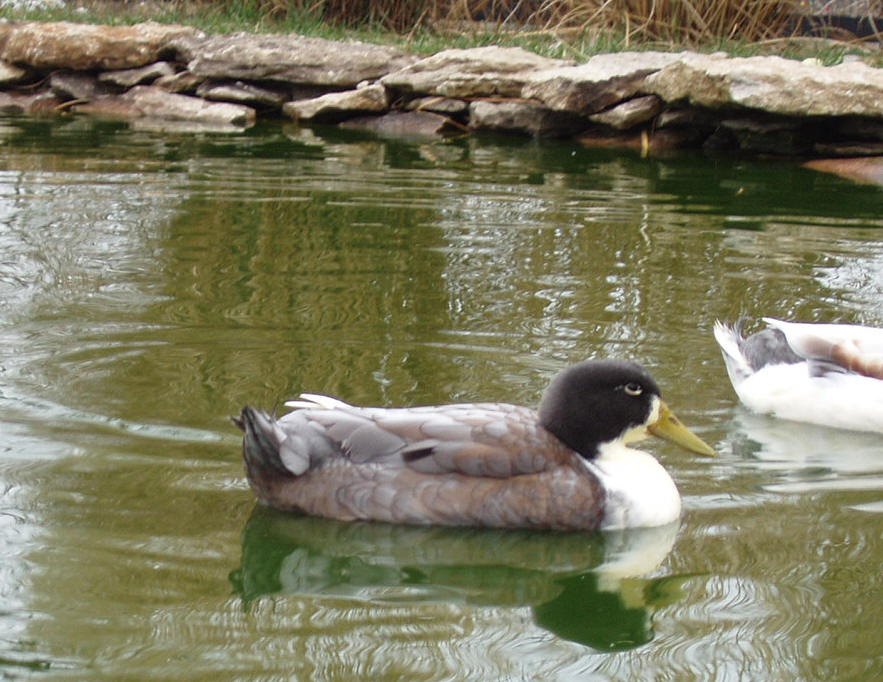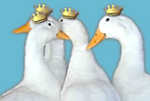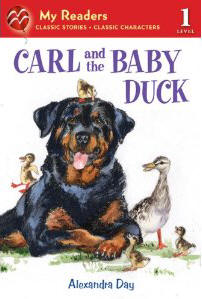Duck House Fundraiser A Huge Success!

Thank you to everyone who donated Duck Houses in February!
We received funding and have ordered all TWELVE of our new Duck Houses!
This was just such an amazing surprise to raise these much-needed funds so quickly. We're so grateful to our supporters and friends for your kindness and generosity--we are simply overwhelmed!
To our Duck House Donors: If you haven't already done so, please be sure to Email Us with the message you would like engraved onto the name plate that will be mounted on your donated Duck House. We will be acknowledging all name plates in a future newsletter once the houses are assembled. We're so excited!
If you missed out on donating a Duck House, we will be running a fundraiser for 4 Goose Houses this summer!
March 2012 UPDATE: These "outdoor" dog houses turned out to have VERY poorly constructed roofs and sadly did not last long. The roofs are hollow inside AND the rear overhang doesn't clear enough of the house to prevent interior rotting around the hinges. Within 1 YEAR of owning these houses, the roofs were literally crumbling away. Calls to the company were unproductive who said they were outside of the warranty period.
We have since built our own beautiful replacement roofs of much-improved solid design and with a few inches of overhang to prevent interior rotting around the hinge hardware.
***WE DO NOT RECOMMEND THESE HOUSES!
Frost Bite
When Billy arrived at our sanctuary he was suffering from frostbite on his facial carnicles and on the webbing of his feet. Our vet prescribed Granulex drops, which have the consistency of molasses.
We applied Granulex drops twice a day to the effected areas and saw rapid (and even overnight) improvement. Treatment continued for 7 days until all of Billy's skin was completely remedied.
As always, prevention is the best medicine to avoid frostbite in your pet birds. Don't leave your birds outside in extreme temperatures (those below 15 degrees F), in severe weather conditions or when dangerous wind chills are in effect.
Photo Courtesy of Phyllis
Diagnostic Chart
We've added a few helpful pages to our website to help families provide the best care possible for their pet ducks and geese.
This information is NOT intended to replace quality vet care. It is here to help alert you to the possible severity of your pet's situation and to help you discuss alternatives with your vet. Always seek out quality vet care as soon as possible if you are seeing any of these symptoms in your pet duck or goose.
We've set up a simple Diagnostic Chart to help you work your way through possibilities. In the chart you will find a list of common symptoms and a limited list of possible causes that are in no way conclusive.
We are also posting healthy blood test results (full avian comprehensives) to provide comparisons for your pets. Not all vets have access to comparative test results for domestic waterfowl, so we are beginning to compile a few samples on our website.
If you would like to share healthy blood work information for your domestic duck or goose please Contact Us. Test results must be performed by a certified lab, then scanned and emailed to us or sent via snail mail. Ducks must be healthy and between the ages of 2-5. Geese must be healthy and between the ages of of 2-15.
Flock Communication
February was a difficult month for us as we let go of our beloved Deirdre Dear Heart. In addition to other medical issues, Dear-Dear had inoperable cataracts in both of her eyes. Even though she left our world without her vision, she did not leave without teaching us something wonderful about duck communication.
Deirdre was always able to find her food and water bowls; in fact, she was extremely proficient in finding her way around from pond to barn. The one thing she couldn't do well was tell when it was treat time--that is, until we figured out how her flockmates communicated with her.
We were intent on spoiling Dear-Dear with tasty treats throughout her final months with us, but early attempts were entirely unsuccessful. We would find a way to secretly lure Deirdre away from the other ducks in order to sneak her special snacks only to discover that she had no way of knowing what we were doing. Inevitably, the other ducks would see what we were up to and come running over to get in on the action. Their subsequent and excited quacking inspired Deirdre to suddenly gear into action and go hunting for treats right along with them.
This is how we learned that the flock's excited quacks provided Deirdre with precise auditory signals that let her know it was treat time. Not only did the flock tell her when goodies were being handed out, but the intensity of their quacking let her know exactly what kind of treats were being served. She could easily tell the difference between vocalizations for healthy greens and those for freshly-gathered, juicy nightcrawlers (every duck's favorite!). Her physical reactions to these calls were unique, appropriate and wonderfully inspiring. Deirdre's flock ended up keeping her belly warm and happy, proving that blind ducks benefit greatly from good friends.
Sinusitus
Bubbles that appear in the corners of the eyes on a regular basis that are not caused by an impact injury or appear only during preening may be an indication of a sinus infection.
How do you tell if the bubbles are caused by an impact injury? If your duck or goose is squinting or if there is any swelling or obvious signs of eye injury than you are witnessing bubbles brought on by trauma.
However, if your duck or goose has bubbles, but their eyes look healthy and open, you may be seeing signs of a sinus infection. Sinus infections tend to affect both eyes, which can be another indicator. In some cases, the corners of the eyes may appear a darker pink than usual or even red.
Your vet will likely prescribe Tobramycin 0.3% (which usually comes in a 5 ml bottle). Most vets will advise two drops per eye every twelve hours.
Angel Wing
We often get emails from concerned people about wild geese with "broken wings" that aren't really broken at all. Although Angel Wing inhibits flight in wild waterfowl, it's harmless when it occurs in domestic ducks and geese.
Angel wing is a condition where the muscle in the wing tip flips the wrong way during development, and as a result, a few of the primary wing feathers do not fold up and tuck in the way their other wing feathers do.
Angel wing is harmless in non-flying ducks and geese. It can be corrected in ducklings & goslings when you first begin to notice one or both of their wings initially drooping and then turning outwards.
Angel Wing can be caused by genetic predisposition or too much protein in their diet. If you begin to see this in your duckling or gosling, your vet can give corrective dietary advice and teach you how to bandage the wings correctly in place with non-adhesive gauze.
Do not cut feathers as a means to correct angel wing. If you adopt a duck or goose that has angel wing in one or both wings, it wonít bother them at all and you donít need to intervene in any way. It is merely aesthetics.
Angelo "The Airplane" had dual angel wing,
which looked great on the Runway!
Joseph had Angel Wing on one side
Wry Tail
Some ducks and geese hatch out with crooked tails. While their wing tips point straight back, their tails are twisted off to the right or left. While this can be the result of a mother hen not rolling her eggs properly during incubation, it is more often a genetic tendency that is caused by two inherited recessive genes. This condition is known as wry tail and it is completely harmless to the bird.
Lewy's wry tail veers off to the left
 Taloo's
wry tail twists to the rightPhoto Courtesy of Glynis & Eric
Taloo's
wry tail twists to the rightPhoto Courtesy of Glynis & Eric




